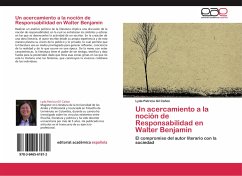In this paper we will address Walter Benjamin's philosophical use of allegory, its peculiarity and relevance. We argue that it is through allegorical images that it is possible to think and think (us) in a different way. A way that perhaps succeeds in subtracting itself from a world that is increasingly reifying and reifying, that places philosophy in a pendulum with art or artistic forms, in such a way that their dialogue is not only fruitful but eminently necessary. A dialogue in which allegorical signification cannot make sense (or make no sense) without philosophical reflection, and in which philosophical reflection would lose its richness if there were no allegorical figures. Allegory is a resource which, as we shall see throughout this paper, has been used since time immemorial, in a variety of ways and with substantial philosophical-political implications. Benjamin's special emphasis on this resource is linked to a form of philosophising and political praxis that allows him to configure a conceptual framework of history, time, art, perception, memory, subjects and objects that is completely different from previous approaches.
Bitte wählen Sie Ihr Anliegen aus.
Rechnungen
Retourenschein anfordern
Bestellstatus
Storno








